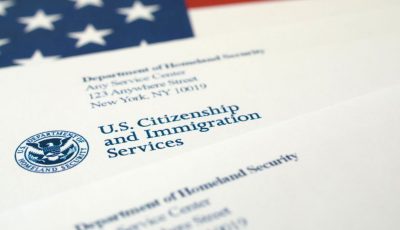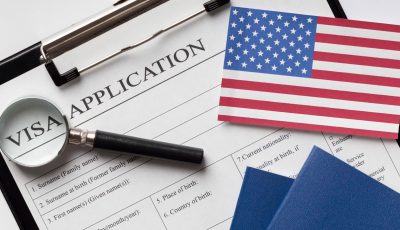Gullick: EB3 visa applicable for CW-1s

U.S. Citizenship and Immigration Services district director David Gullick speaks in front of Saipan Chamber of Commerce members in yesterday’s meeting at the Sand Castle of the Hyatt Regency Saipan. (Jon Perez)
U.S. Citizenship and Immigration Services district director David Gullick said he sees the EB3 visa as one visa category that is applicable for guest workers that are under the CNMI only CW-1 program. Gullick spoke in front of Saipan Chamber of Commerce members in yesterday’s meeting at the SandCastle Saipan of the Hyatt Regency Saipan.
Gullick said employers could petition their employees, especially those who have been working for years in their respective companies, for the EB3 visas. He added that much of the information is available at the USCIS website, uscis.gov.
“The most common one that we see and really applies for CW workers who have been working for you for years is what we call EB3,” said Gullick.
EB3 is a type of immigrant visa for U.S. employment-based permanent residency. Professionals, skilled, and other workers are the categories under the type of visa and are not qualified for the EB1 and EB2 that are intended for workers with extraordinary abilities and with advanced degrees.
The EB-3 visa type has less stringent requirements but the waiting period takes longer, usually more than five years. Under the EB-3 visa, employers need to sponsor their applicants since there is no self-petition in the said category.
Gullick said that a quota system is also followed in the EB3 visa and those who applied in 2009 had received their visas this year. “There’s no way to speed up the process. That’s about it. So, I’m advising employers to start your labor certification process as soon as you can.”
He added that employers are required to secure a permanent labor certification from the U.S. Department of Labor. “The EB3 visa is for all the other workers, first thing to do is to get the permanent labor certification from the Department of Labor.”
“[Employers] must then submit a petition to the USCIS and ‘say yes, I have the PLC, and the person I want to hire or needs to continue to be employed meets the qualifications of [Department of Labor].’ The date you filed your petition to USCIS is already accepted for processing.”
U.S. Immigration also has a non-quota system, which is for spouses of U.S. citizens and immediate relatives; and a quota system for family-based and employment-based.
“If there are a lot of numbers in the first category then they are going to use up the numbers in the next category,” said Gullick.
He also advised employers that continue to hire workers with temporary status must always check the I-94s. “Check those dates and make sure they do not stay longer. We don’t want to happen that you don’t leave on time. CW-1s who will have to leave must get a new visa beginning Oct. 1.”



























